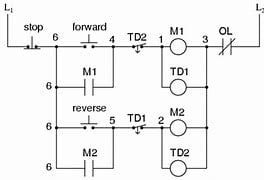How AC Motors Work?
Induction, synchronous, and universal AC motors are everywhere. If you’ve ever wondered how those big industrial fans in factories work, or how your kitchen mixer turns egg whites into meringue, the answer is an AC motor. But how do they work?
What is an AC Motor?
An AC motor is an electric motor that uses an alternating current to create rotation. The basic principle behind an AC motor is that when electricity flows through a wire, it creates a magnetic field. This process is called electromagnetism, and it’s the same principle that powers things like MRI machines and electric cars.
But what if we could use that magnetic field to create motion?
That’s exactly what an AC motor does. Essentially, an AC motor consists of three main parts:
- Stator:
The stator is a stationary ring that contains coils of wire. These coils create a magnetic field when an electric current is passed through them.
- Rotor:
The rotor is a central shaft that is surrounded by magnets. When the stator’s magnetic field interacts with the rotor’s magnets, it causes the rotor to spin. - Commutator:
The commutator helps to keep the current flowing in the correct direction so that the rotor can keep spinning.
Together, these three components allow AC motors to convert electrical energy into mechanical energy.
The different types of AC motors:
There are three main types of AC motors: induction, synchronous, and universal.
Induction Motors
Induction motors are popular general purpose AC motors. They are a type of electric motor that uses electromagnetic induction to convert electrical energy into mechanical energy. The rotor of an induction motor is wrapped with a copper or aluminum conductor, which is called the winding. When an alternating current flows through the winding, it creates a magnetic field. This magnetic field interacts with the magnetic field of the stator, or stationary part of the motor, to create rotational force. Induction motors are typically used in applications where speed control is important (industrial AC motors) such as fans, pumps, and conveyors. They are also commonly used in computer numerical control (CNC) machines.
Read more here: Induction Motors: Electromagnetic Induction and Magnetic Fields
Synchronous Motors
A synchronous AC motor is an electrical motor in which, at steady state, the rotation of the shaft is synchronized with the frequency of the supply current; the rotation rate is exactly proportional to the frequency and does not depend on the load. The term “synchronous” refers to the fact that the rotor turns at the same speed as the rotating magnetic field (created by the stator’s winding). The winding on the rotor may be either wound or unwound. The main advantage of a synchronous motor over an induction motor is that it has very good power factor. This means that, for a given power output, it draws less current from the supply, resulting in lower energy costs. AC synchronous motors are also typically more efficient than induction motors. Another advantage of synchronous motors is that they can be used as generators, due to their unique construction. When used as generators, they are known as synchronous generators.
Read more here: Basics of Synchronous AC Motors
Universal Motors
A universal motor is a type of electric motor that can operate on either alternating current (AC) or direct current (DC). Universal AC and DC electric motors are used in a wide range of applications, including power tools, blenders, and vacuums. Universal motors are typically smaller and lighter than other types of electric motors, making them well-suited for portable devices. Universal motors typically have high starting torque, meaning they can quickly reach their full speed. However, this also means that universal motors consume more power than other types of electric motors. Universal motors are also more likely to overheat than other types of electric motors, so they need to be properly cooled to prevent damage. Despite these drawbacks, universal motors are still widely used due to their versatility and compact size.
How To Identify Motors in Circuits and Diagrams:
Motor in a circuit:

Motor Control Circuit:

Motor Control Ladder Diagram:

Useful Resources:
Ohms Law: Understanding Electric Power Circuits
Electricians Guide to AC Motor Controls
FAQs
What is an AC motor?
An AC motor is an electric motor that uses alternating current (AC) instead of direct current (DC). AC motors are more efficient than DC motors and can be found in a variety of applications, including fans, pumps, and compressors. Read more..
How does and AC motor work?
An AC motor works by using electromagnetism to convert electrical energy into mechanical energy. The alternating current creates a rotating magnetic field that interacts with the armature, or rotor, of the motor to create torque. Read more..
What are the benefits of AC motors?
AC motors are more efficient than DC motors and can operate at higher speeds. Additionally, AC motors are less likely to overheat than DC motors and can be used in a variety of applications. Read more..
What is an induction motor?
An induction motor is an AC electric motor in which the electric current in the rotor needed to produce torque is obtained by electromagnetic induction from the magnetic field of the stator winding.
What is a synchronous motor?
Unlike an asynchronous AC motor, a synchronous AC motor rotates at the same speed as the frequency of the AC power supply. In order to achieve this, the synchronous AC motor must be synchronized with the power supply using a feedback system. Read more..


